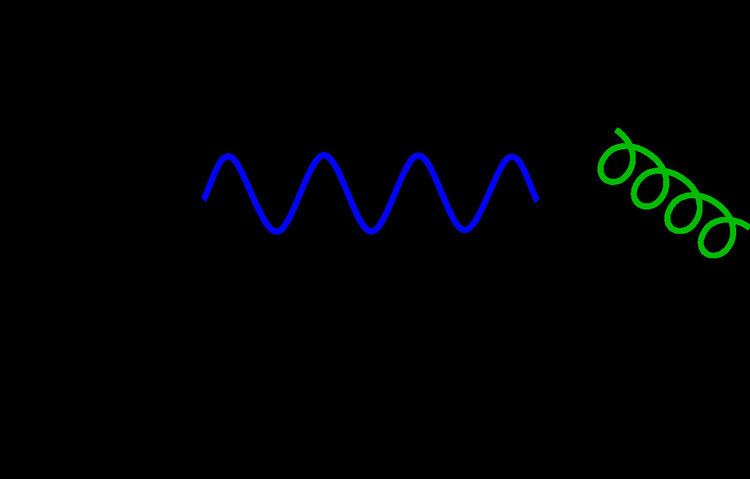 | ||
In physics, specifically field theory and particle physics, the Proca action describes a massive spin-1 field of mass m in Minkowski spacetime. The corresponding equation is a relativistic wave equation called the Proca equation. The Proca action and equation are named after Romanian physicist Alexandru Proca.
Contents
The Proca equation is involved in the Standard model and describes there the three massive vector bosons, i.e. the Z and W bosons.
This article uses the (+−−−) metric signature and tensor index notation in the language of 4-vectors.
Lagrangian density
The field involved is a complex 4-potential Bμ = (φ/c, A), where φ is some kind of a generalized electric potential and A is a generalized magnetic potential. The field
The Lagrangian density is given by:
where c is the speed of light, ħ is the reduced Planck constant, and ∂μ is the 4-gradient.
Equation
The Euler–Lagrange equation of motion for this case, also called the Proca equation, is:
which is equivalent to the conjunction of
with (in the massive case)
which may be called a generalized Lorenz gauge condition.
When m = 0, the equations reduce to Maxwell's equations without charge or current. The Proca equation is closely related to the Klein–Gordon equation, because it is second order in space and time.
In the vector calculus notation, the equations are:
and
Gauge fixing
The Proca action is the gauge-fixed version of the Stueckelberg action via the Higgs mechanism. Quantizing the Proca action requires the use of second class constraints.
If
where f is an arbitrary function.
